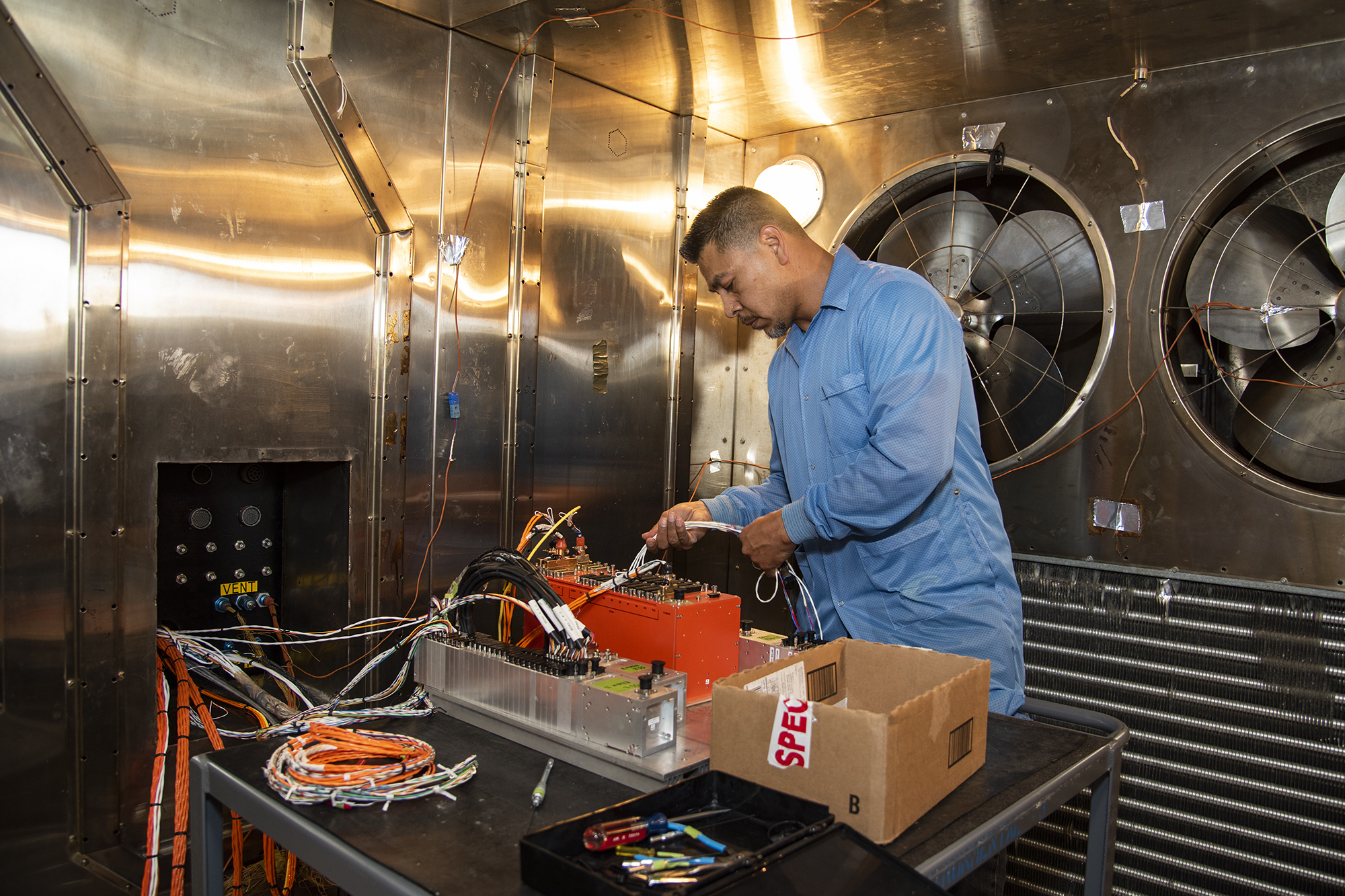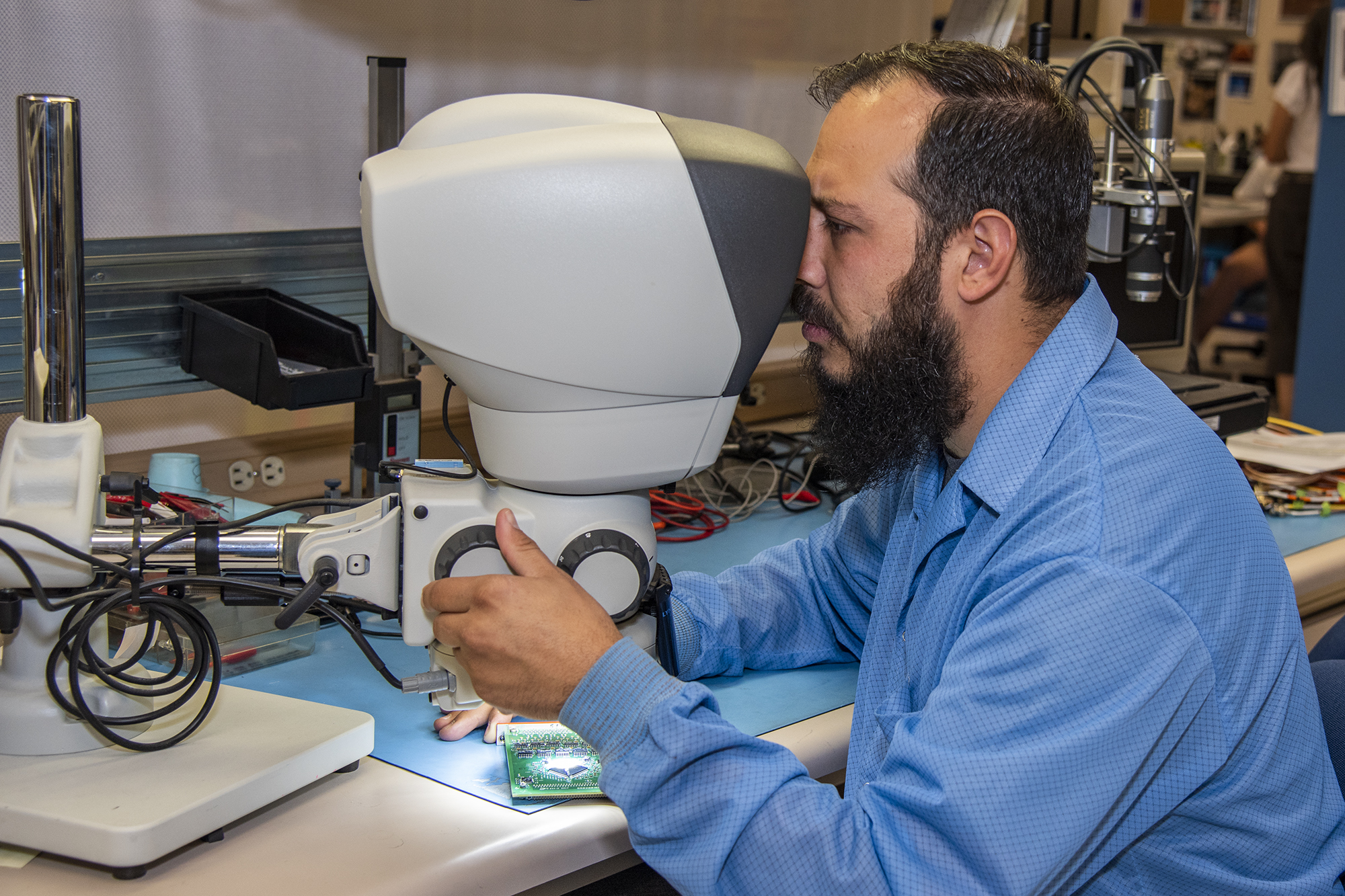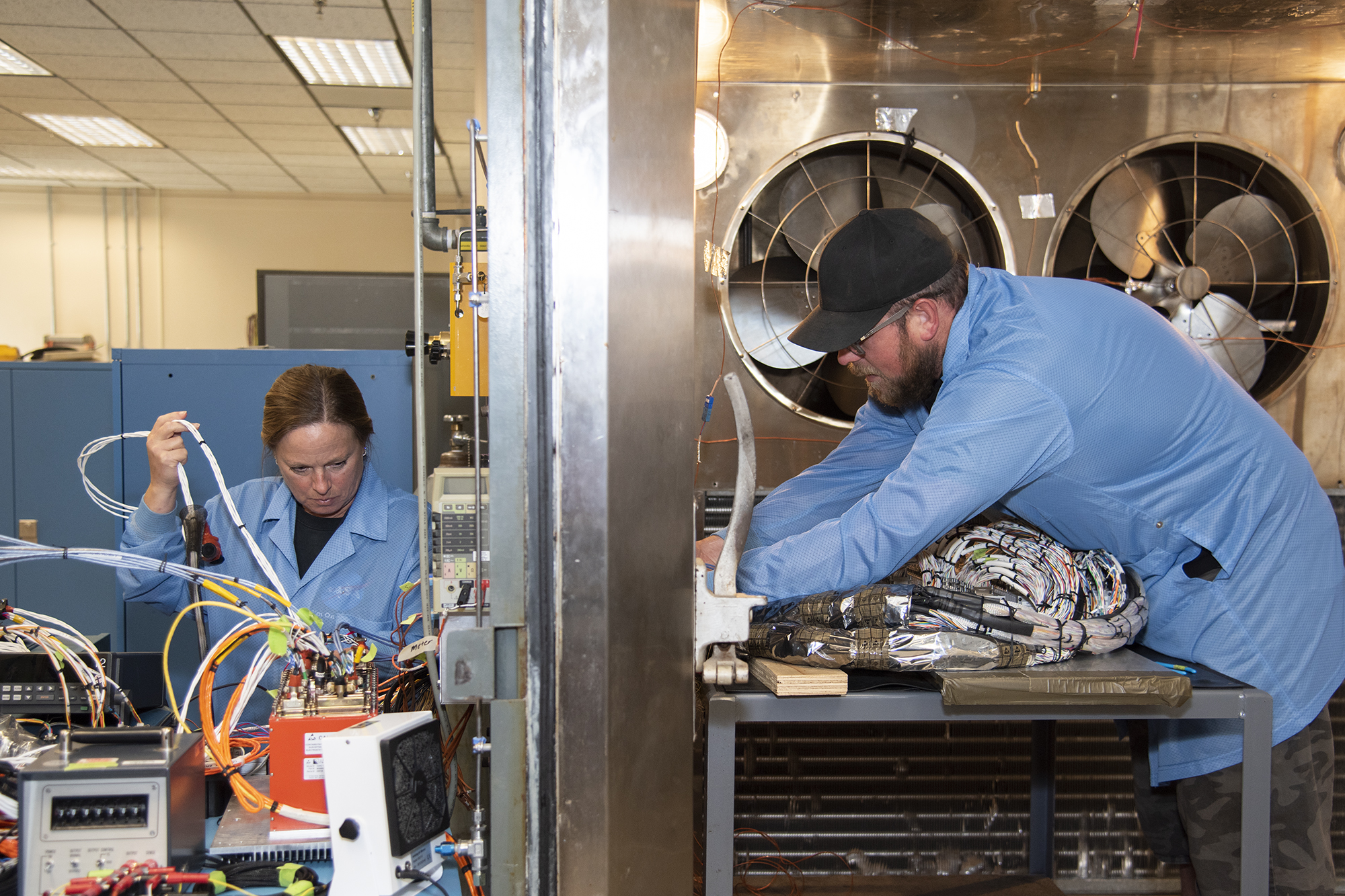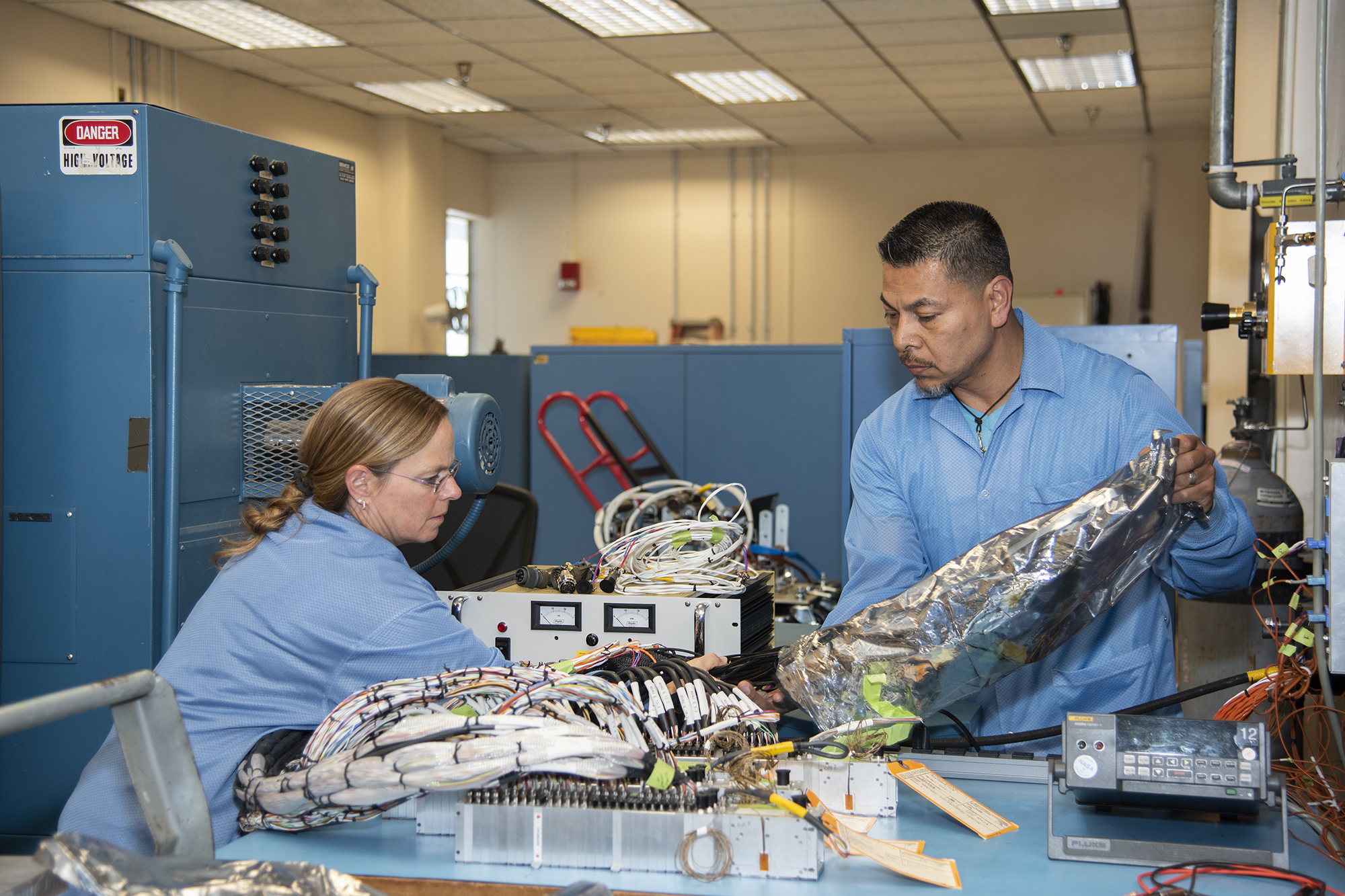
When it comes to data systems for the Orion Ascent Abort-2 (AA-2) flight test vehicle, the NASA Armstrong Flight Research Center in California is ensuring engineers will have all the information they need to assess how the spacecraft’s launch abort system can pull the Orion crew module to safety in an emergency.
During a 2019 test, the AA-2 flight will prove the system will work in the high-stress aerodynamic conditions during ascent to space.
Several Armstrong organizations are working together to make sure elements of the AA-2 are ready for flight and capable of withstanding the stresses expected during the test including the Environmental, Pressure, Calibration and Electronic Fabrication laboratories, the Telemetry Shop and Electrostatic Discharge Program, all within the Engineering Support Branch.
“It is a well-rounded branch and very interconnected,” said Cindy Jeffers, the branch chief. “With the AA-2 flight, every single part of my branch is affected. Telemetry does all of the checkouts, Fabrication built wire harnesses and does all of the inspections, Environmental does all of the vibration and temperature testing, then it goes back to Fab for an additional inspection to make sure nothing broke during environmental testing. Then it goes back to telemetry for checkout.”

Components are thoroughly inspected and tested, checked and rechecked, like the Orion AA-2’s main data acquisition system. That system started in the Telemetry Shop, where April Torres, lead information technology specialist and Angelo De La Rosa, Armstrong’s flight termination system administrator, uncrated it. In fact, NASA Armstrong has many roles with the AA-2 vehicle.
A general health check of the instrumentation, called an acceptance test, begins the complex process.
“Each functional check and acceptance test have 10 different set up configurations, there are 10 kinds of modules that we test and there are 10,168 test points per functional test,” Torres explained. “From that we created 21 different lists, 21 different displays and 964 parameters were imported from that information for functional testing.”
After the initial test on components like the main data acquisition system that came to Armstrong, they go to the Fabrication Lab for an inspection to make sure the components inside are secure. The elements also will be ruggedized, a process that involves precision application of a silicone adhesive to enhance the system toughness for vibration and temperature tests, and proven it can tolerate flight conditions. Once accomplished, the component goes back to the Telemetry Shop for another full functional test before it goes to the Environment Lab for testing.
While the data acquisition system was tested, pressure and vibration testing continued on AA-2 accelerometers and pressure transducers. Tim Gadbois validates that the accelerometers, or sensors that record acceleration, and the transducers, which record pressure, perform as intended.
Don Griffith, Armstrong’s metrology program manager said he uses the science of measurement, metrology, to characterize how a calibration compares to the standards to ensure the right tool is being used for the right job. Without that step, researchers would be essentially making an educated guess.
As one of the components was prepared for a test at Armstrong’s Environmental Laboratory, lead Karen Estes explained the lab’s capabilities include testing items up to 4,000 pounds on the main shaker to test how vibration effects the component. In addition, elements can be tested from -100 degrees F to 500 degrees F to record how it responds at various temperature extremes.
“Just about every experiment that goes on an airplane goes through the lab,” she said. In this case that includes AA-2.
“We know all of the components are working properly and we know it works well in a regular ambient lab environment, so we take it to the Environmental Lab to be subjected to vibration and temperatures,” De La Rosa said. “We are monitoring and testing it while it’s in the environmental chamber and make sure there are no hiccups or glitches while it is being subject to those extremes.”
Armstrong’s Dan Noland and Lucas Moxey developed a camera system that also underwent vibration and thermal testing. The system is designed to operate as part of the Orion AA-2 test article’s abort test booster/separation ring developmental flight instrumentation subsystem and capture images when the booster separates.

Monitoring the signals to and from the test article in the environmental laboratory is essential to make sure that all channels are operating as anticipated and no signals are lost, Torres said. If a signal is lost, researchers will look through the data in an effort to determine why.
There are data lists and a number of work spaces to monitor each different item and a number of files to be processed following the tests and made available for engineers to analyze the data. Torres and De La Rosa create charts for an overview and deliver them to engineers in a database where engineers can look at greater depth on their individual interests.
Following the work in the environmental lab, the component goes back to the fabrication shop for inspection. Once complete, it is returned to Telemetry for another full functional test on that equipment to make sure the final product, before it gets installed on the pallet that is going on the vehicle, is fully functional.
Torres and De La Rosa were consulted early on to capitalize on their experiences with components of NASA’s Pad Abort-1 flight test, a 2010 evaluation of the Orion abort system’s ability to take the crew module to safety during a challenge on the launch pad.
David Dowdell, another experienced team member and Armstrong’s instrumentation lead for the Orion AA-2 work, has been preparing for the work for years. Dowdell and Joe Hernandez, a senior instrumentation engineer for the AA-2, coordinate the work and assign priorities. The first major package was finished in early summer and the validation of the final components that the center is responsible for are nearly complete.
Process, organization and documentation is how the volume of work flows.
“It doesn’t get overwhelming because we know where everything is and we know what’s coming next,” Torres said.
View more Orion AA-2 component testing videos:



























